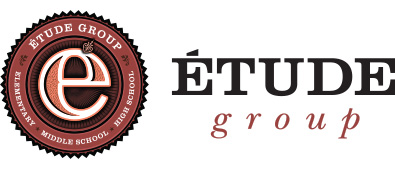Ever wonder how much time of your child’s day is spent in non-academic time?
The chart below shows the differences between our school and a typical SASD Elementary School. You will notice that our primary students, (KG, G1 and G2) receive an additional 45 minutes per week in non-academic time. Our upper primary, students G3 – 5, 75 minutes per week.
|
Weekly Non-Academic Time |
ESAA |
SASD Elementary School |
|
Visual Art |
1 hour |
1 hour |
|
Music |
1 hour |
1 hour |
|
Dance |
1 hour |
------ |
|
Drama |
1 hour |
------ |
|
Guidance |
------ |
15 minutes |
|
Library (reading) |
------ |
30 minutes |
|
Phy Ed (primary) |
(30 minutes) 1 hour |
1 hour |
|
Total Each Week |
(4.5 hours) 5 hours |
3.75 hours |
A common misconception is that our Project Based Learning (PBL) time is not academic time. The highest level of learning is the ability to demonstrate understanding through multiple modalities. Combining the arts, engineering, and technology with academic content is the embodiment of this.
An excellent example of ESAA’s academic PBL time is provided in this PDF of the “Gingerbread Structures – Learning from many angles” project in grade five. The learning outcomes for this project included:
- Observe angles in one’s surroundings and recognize that angles are formed whenever two straight lines meet.
- Demonstrate understanding of different types of angles by identifying, creating and measuring them.
- Demonstrate understanding of multiplication through evaluating and computing number stories.
- Analyze, interpret and transfer visual information from 2- dimensional sketches to create 3-dimensional models and structures.
In addition to learning elements of geometry, multiplication, measurement, engineering, and design in an engaging format; students also developed collaboration, communication, ideation, and predictions skills.
It is important to remember our mission:
Children learn in many different ways, and every child learns through varied and multiple paths. ESAA engages children with innovative, team-based teaching and the seamless integration of the arts, engineering and technology with the academics. At ESAA, children learn to see the world in new way, are encouraged to think deeply about it, and wonder at its endless possibilities, thereby creating a desire to discover.
It is through this mission that ESAA offers a rigorous academic program with a focus on innovative thinking and creative problem solving using the Multiple Intelligences. Students are taught and encouraged to become independent, self-directed learners in an engaging 21st century format with a focus on reading, writing and mathematics. Our approach allows students to make connections, to notice patterns, to analyze and to problem solve through multiple perspectives. Students begin to learn to develop their own reasoning around concepts and ideas.
ESAA offers a collaborative learning environment with the use of thinking routines that create the opportunity for students to understand and articulate their thoughts and reasoning.

